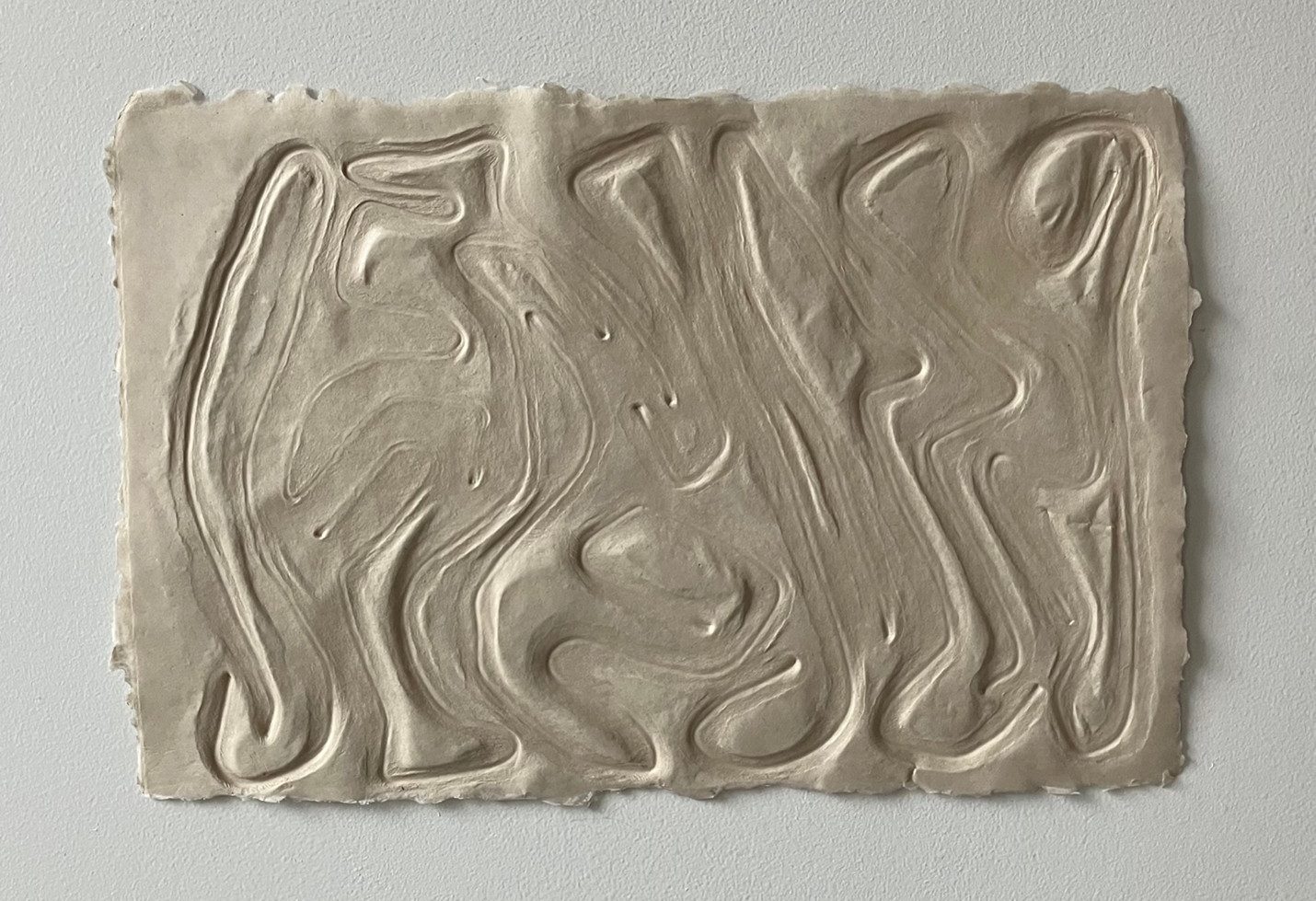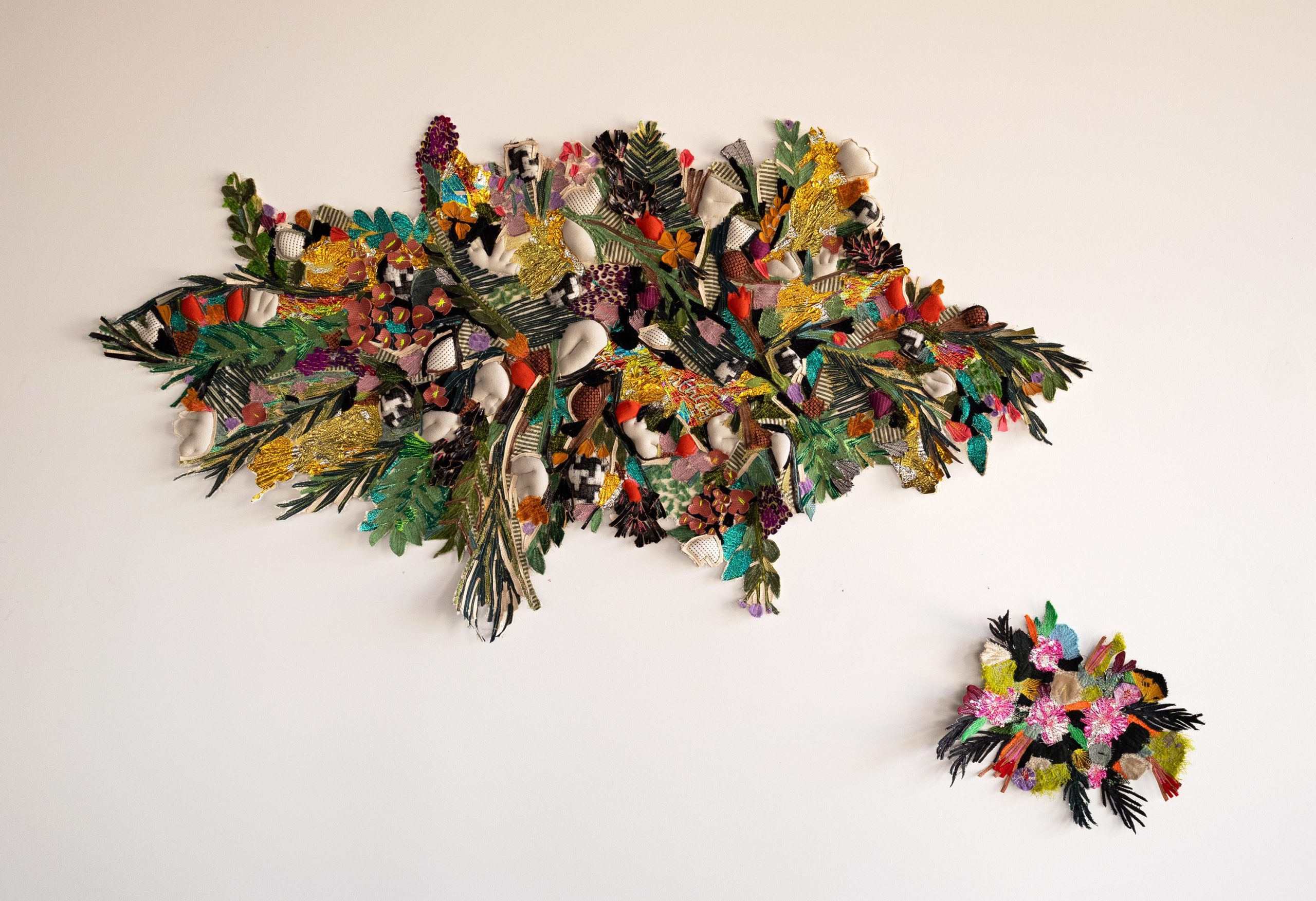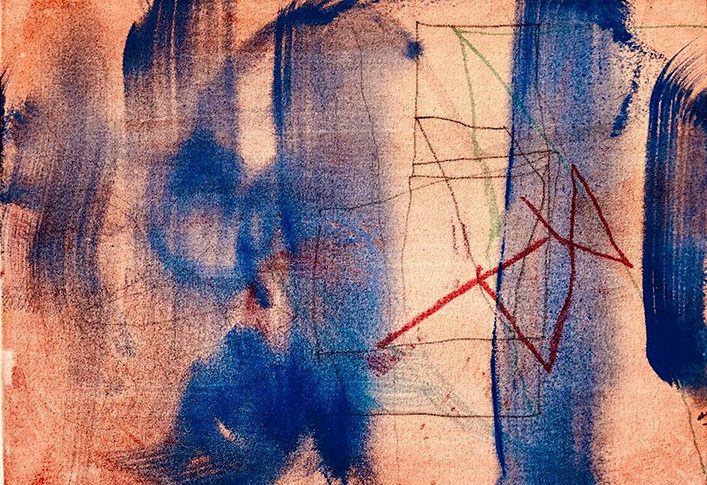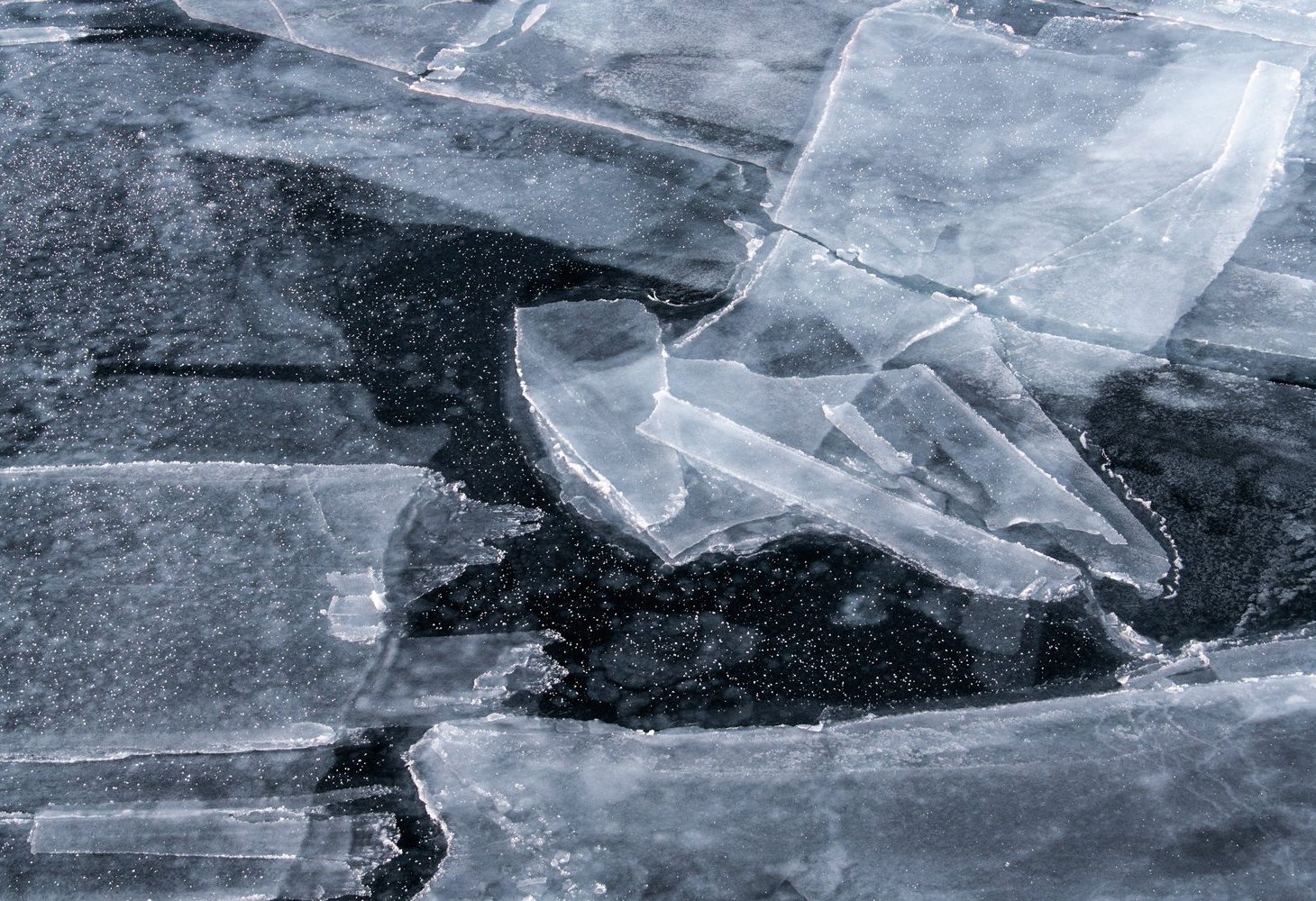Valerie Hammond: Traces
Hammond’s imagery extends through her practice. She is an avid printmaker, as evidenced by the etchings included in this show, as well as a sculptor. Her three-dimensional works are often assembled from two-dimensional drawings and prints. Transferred to very thin Japanese gampi paper, layered images of flora and fauna are sewn together to make long, glove-like arms and carefully constructed heads (Hammond’s son Luc was the model); sewing threads trail from seams like veins or tendrils. The delicacy and transparency of the paper is intentionally reminiscent of skin – here again a sort of metamorphosis is taking place. The head’s features, and especially its eyes, are partially obscured by the wings of a large moth; the arms, seemingly discarded, resemble molted snake skins, cast away in preparation for renewal.
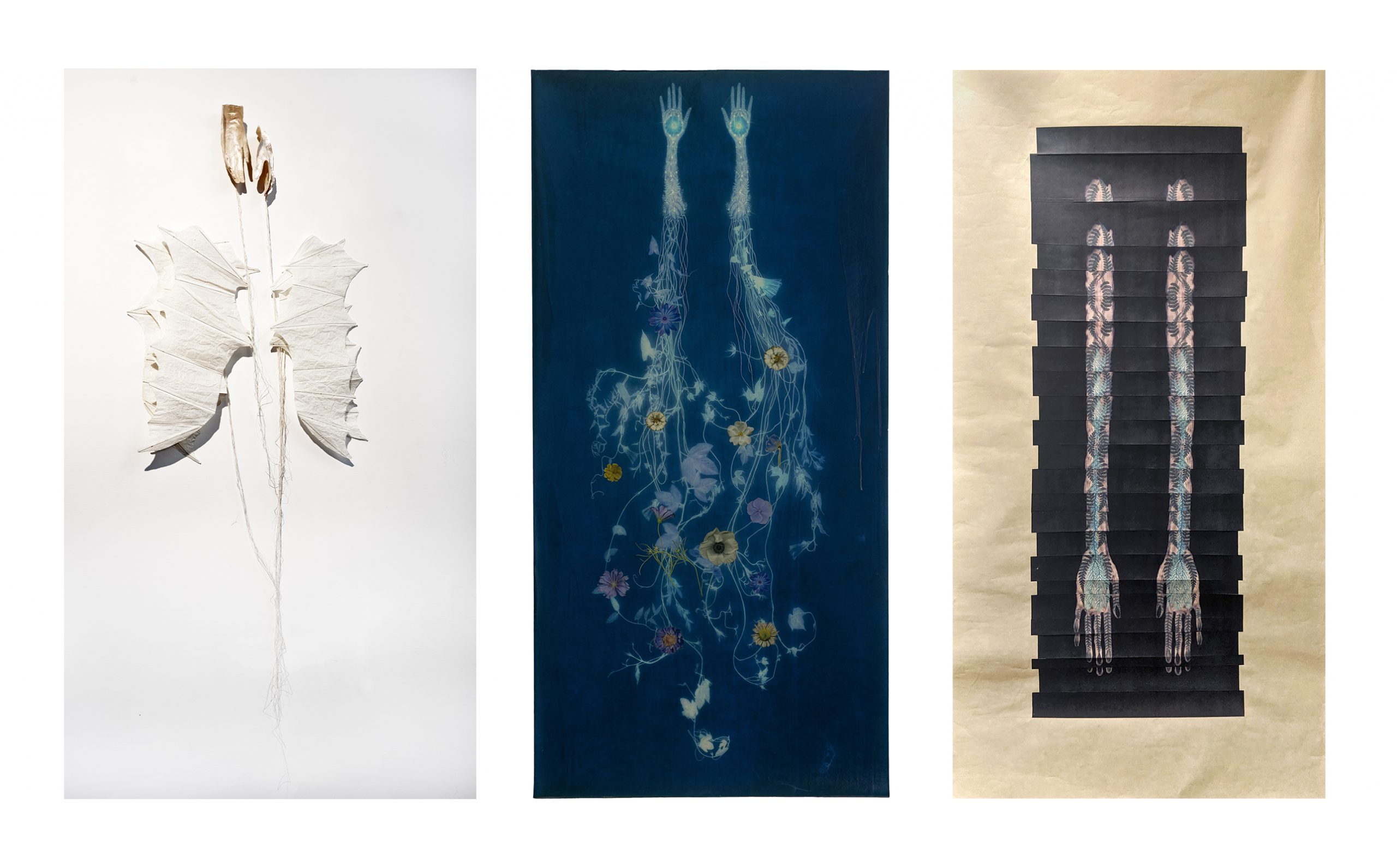
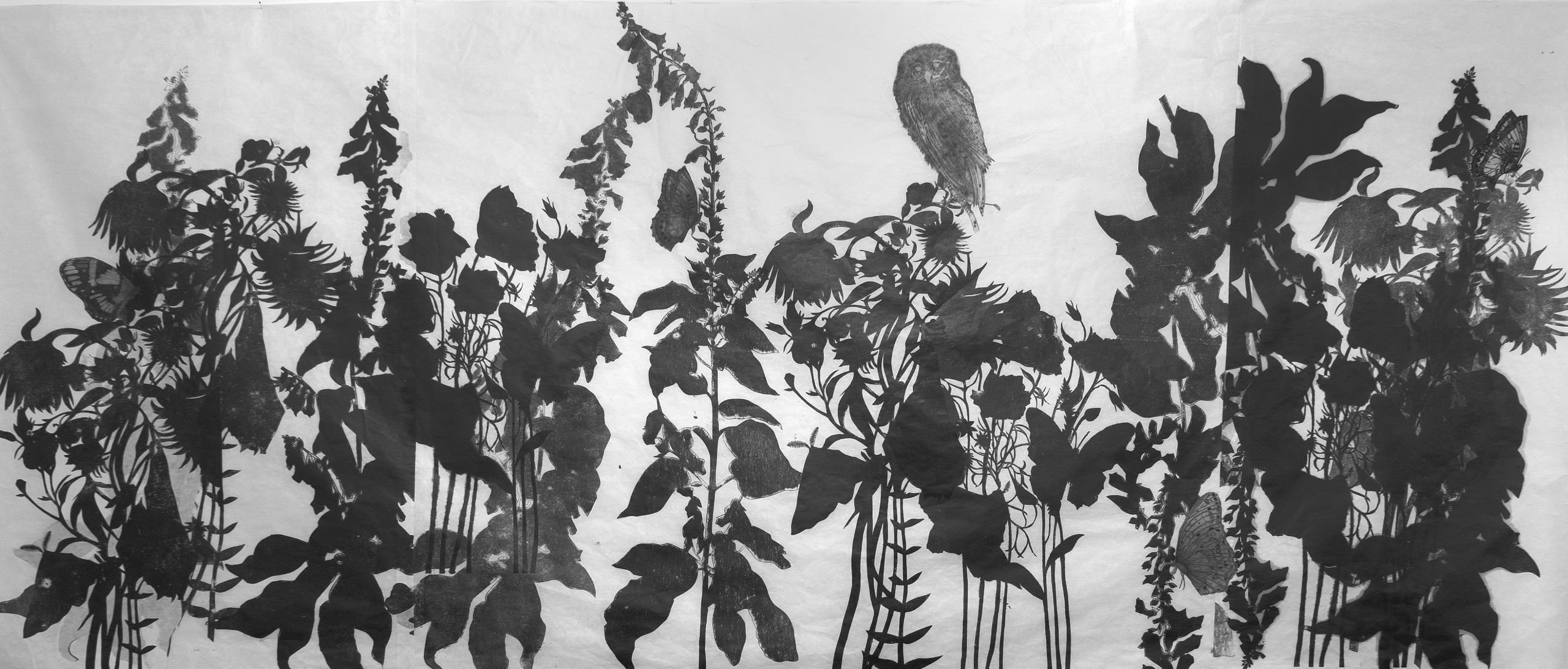
Much of Hammond’s inspiration can be traced to her Hudson River property in upstate New York. The several secluded acres surrounding her centuries-old, many-roomed farmhouse have a variety of flowers and plants, a parade of daily animal visitors, and the low but consistent hum of insects. Wings beating, fur shifting, a startled and wild gaze – all comprise the almost imperceptible moments which unfold daily outside Hammond’s studio door. It is in this charged landscape that Hammond navigates both representation and the manifestation of the un-representable, how we experience nature and the many ways we might allow it to change us, and the various skins and outer shells that we shed in order to transition to new, and possibly more whole, selves.
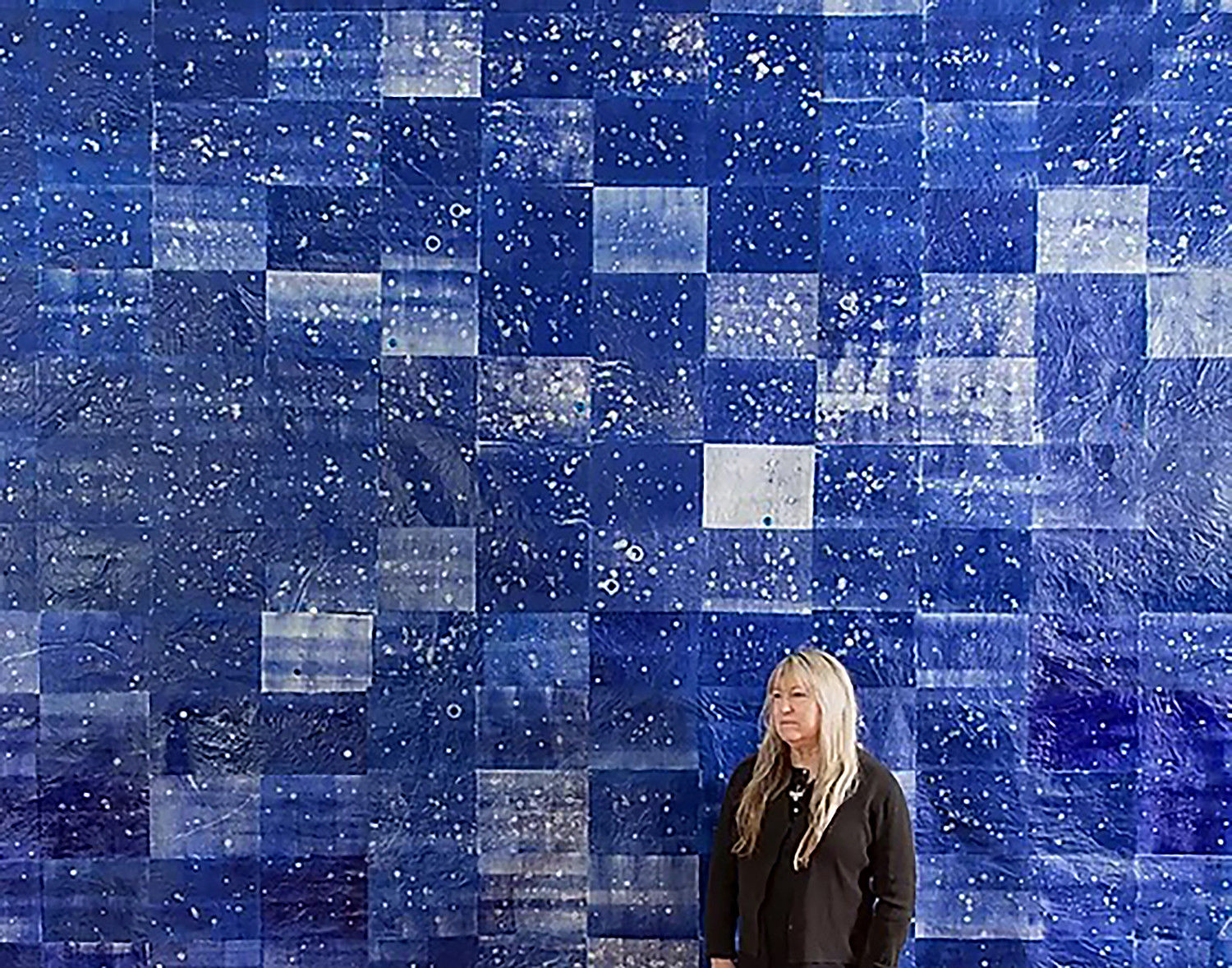
About the Artist:
Valerie Hammond maintains a fluid artistic practice, distinguishable for her organic approach and deft interaction with different mediums. In all of her work, there is play between the material and the immaterial, the physical and the spiritual: the dichotomy between what is seen and the sensation it provokes. The works inhabit a space she is constantly searching for, straddling the indefinable boundary between presence and absence, material and immaterial, consciousness and the unconscious. Her artwork becomes emblematic not only of the people whose hands she has traced or the subjects she is drawing but of her own evolving artist process-testimony to the passing of time and the quiet dissolution of memory.

